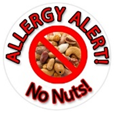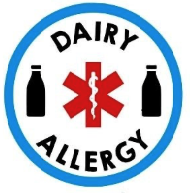Winder Lane, Flookburgh, Grange-over-Sands LA11 7LE
Winder Lane, Flookburgh, Grange-over-Sands LA11 7LE
Telephone: 015395 58434
admin@flookburgh.cumbria.sch.uk
Science
Science is a much-valued part of our curriculum at Flookburgh CofE Primary School! We love to investigate the world around us, developing ways to explore and record how various aspects of our environment interact to produce the phenomena we see. Science is promoted to the children not just as another subject, but as a tool through which they can gain an understanding of the universe as a whole, ranging from everyday occurrences to distance galactic events!
Our science provision is led by a former research scientist educated to the Ph.D. level, who is eager to share his passion for the subject and to enable our children to make their own discoveries. Each science lesson is focussed around the concepts of working scientifically; these help our children to develop the skills which will allow them to become independent scientists for themselves.
Flookburgh CofE Primary School is wonderfully situated within expansive grounds, allowing us to venture outside as much as possible to help bring scientific concepts to life. We also like to venture farther afield, such as Class 2’s recent trip to Holker Hall, where the children have been encouraged to explore different habitats and to create their own sundials.
To ensure that the science provision meets the needs of all children, Flookburgh CofE Primary School is well equipped with resources to bring each topic to life. We are constantly adding to our resource collection; the receipt of funding from the British Science Association has allowed us to acquire a number of digital microscopes which have been very popular with the children!

Curriculum:
Our science provision follows a two-year rolling plan within each class, based upon the 2014 National Curriculum (click image below to expand).
The number in parentheses indicates the level (year group) of that unit. For more information as to the content of each unit, please view the Long Term Plan document below (saved in .pdf format).
2016-07-19 Whole School Science 2 Year LTP
Science within School:
To ensure that science maintains a high profile within school, the subject is regularly promoted in a number of ways, including:
- highlighting to parents individual or group scientific achievements of children through our Celebration Assemblies
- promoting science activities through the class webpages
- ensuring science work is visible around school through displays
- holding annual Science Days in British Science Week
So far, we have held two Science Days (with hopefully many more to come!). To discover what we did on these occasions, please visit the event pages here:
- British Science Week 2016 – A Journey through Scale
- British Science Week 2017 – Cumbria through Time
2016-2017: What have we been up to?!
Presented below are just some of the activities each class has enjoyed over this past year!

Class 2
Identifying and Classifying Materials

Selecting Materials for Particular Clothing

Exploring Shadows & Silhouettes

Comparing and Looking Inside Seeds

Sharing Nature Survey Findings

Class 3
22/09/16 – Volcanism Experiment

Unit: Rocks & Fossils (Yr3)
Description: After learning about the internal structure of volcanoes, it was only right that we had the chance to witness an eruption of our own!
Working Scientifically:
- Record findings using simple scientific language and labelled diagrams
- Identify differences, similarities or changes related to simple scientific ideas
21/11/16 – Making Fossil Models

Unit: Rocks & Fossils (Yr3)
Description: When looking at how fossils are formed, some of us found it tricky to understand that fossils are formed by minerals being deposited in the void left behind by decayed organic material. Although they appear to be, fossils are not made of bone! We used an ammonite fossil to bring this concept to life by making an impression in PlayDoh, into which we poured a quick setting substance known as alginate. Next week, we got to excavate our own fossils!
Working Scientifically:
- Using a range of scientific experiences to explore concepts
- Record findings using simple scientific language and drawings
24/01/17 – Researching Environmental Impacts

Unit: Living Things & their Habitats (Yr4)
Description: How do humans damage the world around us? We looked at the impacts man’s activity has on wildlife and thought about ways in which these disturbances could be lessened.
Working Scientifically:
- Raise own releveant questions about the world
- Recognising when and how secondary sources might help to answer questions that cannot be answered through practical investigations
- Use scientific language to discuss ideas and communicate findings
28/02/17 – Laminated Flower Dissections
Unit: Plants (Yr3)
Description: It’s all very well learning fancy technical words and labelling diagrams, but it is better to find these features for ourselves! We dissected flowers carefully, keeping the structures preserved by laminating the parts we found.
Working Scientifically:
- Record findings in a variety of ways
- Make systematic and careful observations

04/05/17 – Friction Investigation
Unit: Forces & Magnets (Yr3)
Description: Which variables affect how far a car can travel down a ramp? We thought about this carefully, and then agreed that the only variable we would change is the surface the car travels over. We tested various materials, including plastic, sandpaper, carpet and bubblewrap to see which would impede the progress of the car the most.
Working Scientifically:
- Set up simple practical enquiries and fair tests
- Take accurate measurements using standard units
- Record findings using scientific language, labelled diagrams and bar charts
- Using results to draw conclusions

22/05/17 – Magnetism Enquiries
Unit: Forces & Magnets (Yr3)
Description: In their groups, the children devised an experiment they could test using our collection of magnets. They had to devise their hypothesis, method and ways to record findings independently.
Working Scientifically:
- Asking relevant questions and using different types of scientific enquiry to answer them
- Making systematic and careful observations, taking accurate measurements
- Recording findings using scientific language, tables and labelled diagrams
- Using results to draw conclusions

20/06/17 – Digestive System Modelling
Unit: Animals, including Humans (Yr4)
Description: After investigating the roles of each organ in our digestive tract, we had the chance to make these organs for our new class display!
Working Scientifically:
- Report findings using scientific language, drawings and models
- Report on findings including displays and presentations
04/07/17 – Habitat Food Webs
Unit: Animals, including Humans (Yr4)
Description: Each group was given a different habitat, but the same sheet of animal images. Which animals would belong in their habitat? How would they be connected to create a food web? This allowed the children to share their knowledge and to consolidate the variety of food web terminology we have already met this year.
Working Scientifically:
- Record findings using simple scientific language and drawings
- Identify differences and similarities related to simple scientific ideas and processes

Class 4
06/09/16 – Propagating Cuttings
Unit: Living Things & their Habitats (Yr5)
Description: In Class 3, we learnt about how plants reproduce through pollination and seed formation. How else can a new plant form? We met the concept of propagation and investigated which plant species can be cloned effectively using this technique.
Working Scientifically:
- Planning scientific enquiries to answer questions
- Recording data

02/11/16 – Becoming Nature Spotters!
Unit: Living Things & their Habitat (Yr5)
Description: We ventured outside to see how many different animals we could find, ranging from tiny insects to sheep over the hedge! Our data had to be recorded scientifically so that we could judge which animal species was the most plentiful.
Working Scientifically:
- Making decisions about which observations to make, which measurements to use and how long to make them for
- Record data

08/11/16 – Absorbency Investigation
Unit: Properties & Changes of Materials (Yr5)
Description: We were given a selection of seven materials. Which would we use to mop up a spill quickly? We tested them all to see which were best at absorbing water.
Working Scientifically:
- Planning different types of scientific enquiries to answer questions
- Taking measurements
- Recording results using scientific diagrams and labels, tables and bar graphs

15/11/16 – Solubility Investigation
Unit: Properties & Changes of Materials (Yr5)
Description: Which substances are soluble? Which are insoluble? Which liquids make for an effective solvent? We investigated a variety of substances to see what happened!
Working Scientifically:
- Planning different types of scientific enquiries to answer questions
- Taking measurements
- Recording data and results using scientific diagrams and labels, tables and bar graphs
- Reporting and presenting findings
22/11/16 – Chromatography
Unit: Properties & Changes of Materials (Yr5)
Description: How can we separate out two or more liquids mixed together? We used the technique of chromatography to find out!
Working Scientifically:
- Planning different types of scientific enquiries to answer questions
- Taking measurements
- Reporting and presenting findings

06/12/16 – Thermal Conductivity Investigation
Unit: Properties & Changes of Materials (Yr5)
Description: We worked together as a class to generate a large dataset to gauge the effectiveness of different materials at insulating a pot of hot water. Which material made for the most effective insulator? We plotted our data to find out, and had the opportunity to discuss some unusual results.
Working Scientifically:
- Planning different types of scientific enquiries to answer questions
- Record results and use them to make predictions and set up further enquiries
- Reporting and presenting findings

18/01/17 – Heating or Burning?
Unit: Properties & Changes of Materials (Yr5)
Description: What is the difference between heating and burning? Mr. Napper brought this to life by comparing the effects of his camping stove on two spoons, one made of wood and one made of metal. Which one survived…
Working Scientifically:
- Planning different types of scientific enquiries to answer questions, recognising which variables to control where necessary
- Recording results using scientific diagrams and labels
- Reporting and presenting findings

02/02/17 – Making New Materials
Unit: Properties & Changes of Materials (Yr5)
Description: To finish our look at materials, we decided to make a new one of our own! We made a malleable substance by curdling hot milk using vinegar. We then discussed what the potential applications of this substance could be.
Working Scientifically:
- Planning different types of scientific enquiries to answer questions
- Reporting and presenting findings

09/02/17 – Natural Selection in Peppered Moths
Unit: Evolution & Inheritance (Yr6)
Description: We have heard of ‘evolution’ but needed an example to bring the concept to life. We looked at the effect pollution from the Industrial Revolution had on the population of the peppered moth, Biston betularia. Why did the appearance (phenotype) of this species change so rapidly?
Working Scientifically:
- Identifying scientific evidence that has been used to support of refute ideas
- Talking about how scientific ideas have developed over time

26/04/17 – How Does Light Move?
Unit: Light (Yr6)
Description: How does light move through the air (or the vacuum of space)?! We investigated this question and agreed that light must move in a straight line to find its way through our simple apparatus.
Working Scientifically:
- Planning different types of scientific enquiries to answer questions
- Reporting and presenting findings
- Identifying scientific evidence that has been used to support ideas

27/04/17 – Shadow Investigations
Unit: Light (Yr6)
Description: The children were asked to devise and undertake their own light investigations. Some looked at the variables which control shadow formation, others looked at the effects of mixing different colours together.
Working Scientifically:
- Planning different types of scientific enquiries to answer questions
- Reporting findings from enquiries
- Presenting findings orally
- Identifying scientific evidence that has been used to support ideas

10/05/17 – Reflection and Refraction
Unit: Light (Yr6)
Description: Why does the spoon appear bent in water? We met the process of refraction and discussed how this is related to reflection. We also looked at how the matching optical densities of vegetable oil and pyrex can cause a small dish to disappear in front of our eyes!
Working Scientifically:
- Recording observations using scientific diagrams
- Reporting and presenting findings

16/05/17 – Dispersion of Light
Unit: Light (Yr6)
Description: The classic light through a prism experiment! We explored how rainbows are created and the physical laws of refraction and light wavelength cause this phenomenon to occur.
Working Scientifically:
- Planning different types of scientific enquiries to answer questions
- Recording observations using scientific diagrams and labels
- Reporting and presenting findings

23/05/17 – Bubble Dispersion
Unit: Light (Yr6)
Description: Light is not only refracted and dispersed through prisms, we looked at how the surface of bubbles plays a similar role in scattering light and revealing colours!
Working Scientifically:
- Using scientific experiences to explore ideas and raise different kinds of questions
- Recording results
- Reporting and presenting findings from enquiries

29/06/17 – Double Circulation
Unit: Animals, including Humans (Yr6)
Description: Carrying on from our look at the structure of the heart, we brought the concept of double circulation to life by acting out how blood flows twice through the heart on its circuit around the body.
Working Scientifically:
- Reporting findings in written form such as displays and presentations
- Identifying scientific evidence that has been used to support or refute ideas
Unit: Animals, including Humans (Yr6)
Description: Carrying on from our look at the structure of the heart, we brought the concept of double circulation to life by acting out how blood flows twice through the heart on its circuit around the body.
Working Scientifically:
- Reporting findings in written form such as displays and presentations
- Identifying scientific evidence that has been used to support or refute ideas

18/07/17 – Drug Awareness Posters
Unit: Animals, including Humans (Yr6)
Description: We discussed the ways in which drugs are dangerous to our bodies and how we should make others aware of these risks.
Working Scientifically:
- Presenting findings in oral and written forms
- Identifying scientific evidence that has been used to support or refute ideas
School Announcements
Monday 14th July 2025 Newsletter
Latest Newsletters
Monday 14th July 2025 Newsletter
Monday 14th July 2025 Newsletter View Newsletter
Monday 7th July 2025 Newsletter
Monday 7th July 2025 Newsletter View Newsletter
Monday 30th June Newsletter
Monday 30th June Newsletter View Newsletter
Monday 23rd June Newsletter
Monday 23rd June Newsletter View Newsletter










